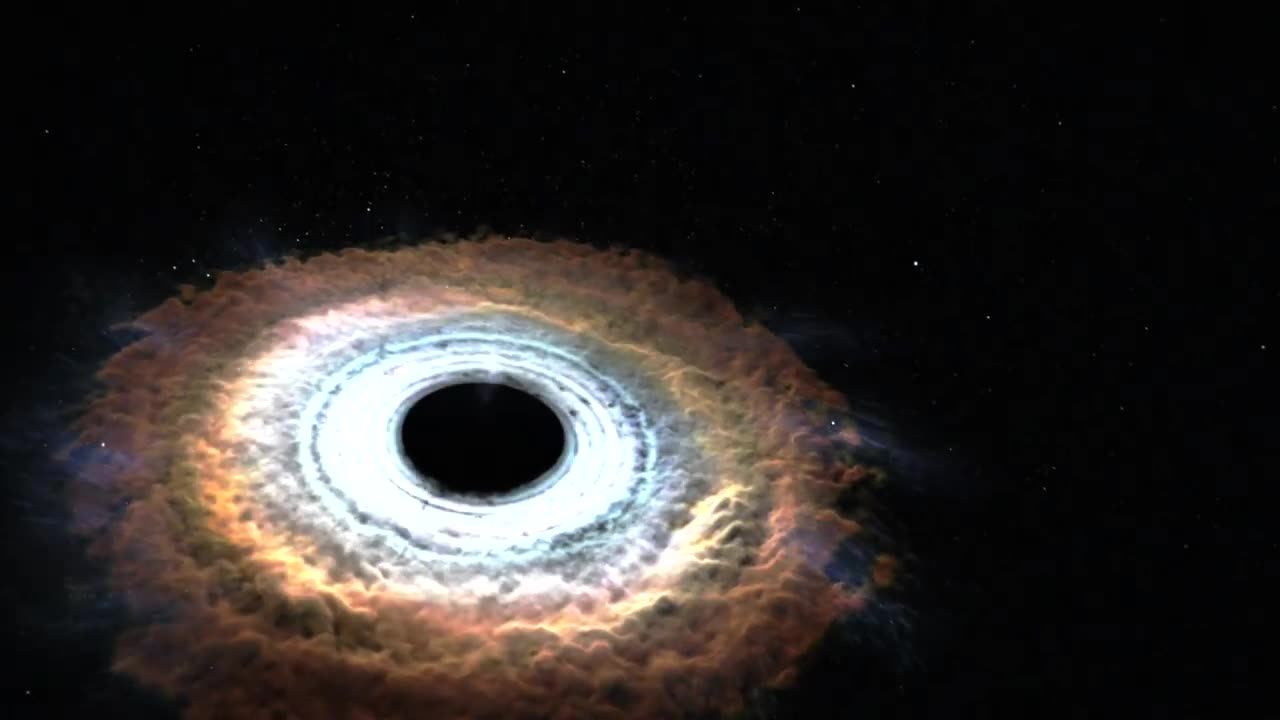Premium Only Content

NASA | Massive Black Hole Shreds Passing Star
This artist's rendering illustrates new findings
about a star shredded by a black hole. When a
star wanders too close to a black hole, intense
tidal forces rip the star apart. In these events,
called "tidal disruptions" some of the stellar
debris is flung outward at high speed while the
rest falls toward the black hole. This causes a
distinct X-ray flare that can last for a few years.
NASA's Chandra X-ray Observatory, Swift
Gamma-ray Burst Explorer, and ESA/NASA's
XMM-Newton collected different pieces of this
astronomical puzzle in a tidal disruption event
called ASASSN-14li, which was found in an optical
search by the All-Sky Automated Survey for
Supernovae (ASAS-SN) in November 2014. The
event occurred near a supermassive black hole
estimated to weigh a few million times the mass
of the sun in the center of PGC 043234, a galaxy
that lies about 290 million light-years away.
Astronomers hope to find more events like
ASASSN-14li to test theoretical models about how
black holes affect their environments.
During the tidal disruption event, filaments
containing much of the star's mass fall toward the
black hole. Eventually these gaseous filaments
merge into a smooth, hot disk glowing brightly in
X-rays. As the disk forms, its central region heats
up tremendously, which drives a flow of material,
called a wind, away from the disk.
Music credit: Encompass by Mark Petrie from
Killer Tracks.
-
 2:26:32
2:26:32
BooniesHQ
4 hours agoGame Of SKATE Shaun Hover Vs. Jeff DeChesare: Boonies Skate Night 1
86.4K2 -
 LIVE
LIVE
a12cat34dog
2 hours agoTHIS GAME IS AMAZING :: METAL GEAR SOLID Δ: SNAKE EATER :: THEY CAN'T SEE US {18+}
68 watching -
 LIVE
LIVE
RamrodJenkins
3 hours agoI'm back! Gears of War time!
51 watching -
 17:08
17:08
Exploring With Nug
1 day ago $1.38 earnedMassive Thunderstorm Hits During Search for Missing Georgia Woman!
12.5K1 -
 LIVE
LIVE
GritsGG
9 hours agoRumble Customs! 3515 Ws! 🫡!
115 watching -
 LIVE
LIVE
ManoloCalifas
54 minutes ago🔴 LIVE - DARK SOULS III SEAMLESS CO-OP
7 watching -
 21:20
21:20
AndresRestart
3 hours ago $0.27 earnedNintendo's GENIUS Mario & Zelda 40th Anniversary Plan!?
6.25K2 -
 LIVE
LIVE
SavageJayGatsby
4 hours agoSpicy Saturday | Let's Play: Baldur's Gate 3 | $300 Spicy Bite Goal | Mallymouse and Gwenifred
85 watching -
 1:00:04
1:00:04
Sgt Wilky Plays
2 hours agoRumble Gaming Bad Company Presents WARZONEPALOOZA
14.3K1 -
![Devin Nunes - Devin Nunes Reveals The Document The [DS] Was Looking For Was Hidden,Truth Is Coming](https://1a-1791.com/video/fww1/20/s8/1/-/e/L/d/-eLdz.0kob-small-Devin-Nunes-Devin-Nunes-Rev.jpg) 1:17:44
1:17:44
X22 Report
9 hours agoDevin Nunes - Devin Nunes Reveals The Document The [DS] Was Looking For Was Hidden,Truth Is Coming
122K124